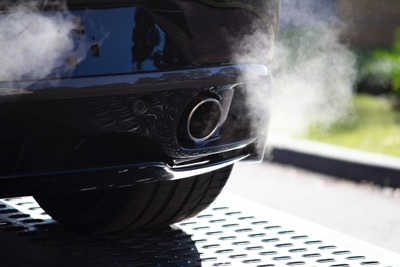The U.S. Environmental Protection Agency (EPA) Administrator Michael Regan on April 12 announced proposed key gas car regulations that could promote EV adoption and save Americans money.
The new standards aim to be some of the most stringent ever, to further limit tailpipe pollution. These proposed changes are not final, which means there will likely be many modifications over the coming weeks and months before heading to a final approval stage.
As proposed, the emissions regulations would be phased in from 2027 through 2032. The EPA expects such measures to reduce emissions by a minimum of 40% by 2030 and save car owners $12,000 over the course of ownership, so long as they own a car that complies with the new rules.
Under the new plan, electric cars, trucks and SUVs could comprise some 67% of all new light-duty passenger vehicle sales in the U.S. by 2032. Moreover, sales of medium-duty EVs could climb to an impressive 46% of all vehicles sold by 2032.
The standards would become stricter as time goes on. The end goal is to reach a U.S. fleetwide average of 82 grams per mile of carbon dioxide for light-duty vehicles and 275 grams for medium-duty vehicles by model year 2032.
The current rules aim for a fleetwide goal of 161 grams of carbon dioxide per mile by model year 2026, for both light- and medium-duty vehicles.
According to the EPA, the proposed standards could decrease emissions by as much as 56% compared to the existing standards.
It's important to note the proposed EPA emissions standards do not have a specific EV requirement, and they don't ban gas-powered vehicles. Instead, automakers can meet the mandates with whichever vehicles they see fit.
That said, the standards would almost certainly boost EV production and sales since manufacturers would likely need to sell an increasing number of electric cars in order to comply with the standards. Many automakers have already invested heavily in fully electric cars, so it simply makes sense they'll continue on that path.
The proposed rules, labeled by the organization as Phase 3, also include guidance for heavy-duty vehicles, meaning there will be stricter emissions regulations put into place for school buses, delivery trucks, construction-related vehicles, etc. The goal is for 50% of new buses and 25% of new heavy truck sales to be fully electric by 2032.
If all goes as planned, the U.S. could save trillions of dollars on fuel costs and health care, while eliminating around 10 billion tons of emissions. As a result of the new mandates, at least 50% of all new vehicles sold in the U.S. by 2030 should be zero-emission vehicles, though the number stands to be as much as 10% higher. In 2022, only 6% of new U.S. vehicle sales were fully electric cars.
Finally, the EPA is also working to set specific rules about minimum warranties for electric car batteries, as well as making built-in battery health monitors required in new cars.










Abby Andrews